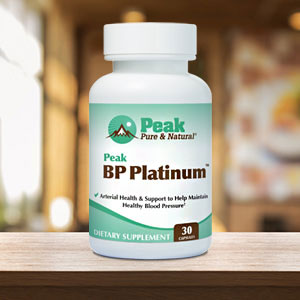Get Easy Health Digest™ in your inbox and don’t miss a thing when you subscribe today. Plus, get the free bonus report, Mother Nature’s Tips, Tricks and Remedies for Cholesterol, Blood Pressure & Blood Sugar as my way of saying welcome to the community!
The mistake that could be skewing your blood pressure

We all know the drill.
You walk into your doctor’s office, jump on the scale and then sit down to have a cuff squeezed around your arm, telling you whether or not your blood pressure is good and your doctor whether you need some additional help.
But what if they’re doing something wrong?
What if, because of their mistake, you think you’re okay and aren’t, or are given medications you don’t need, putting you at needless risk of side effects?
According to research presented at the American Heart Association’s yearly conference, that’s the risk you run every time you check in for an appointment.
It’s all in the cuff
According to the Johns Hopkins scientists who performed the research, the problem is due to the one cuff-size-fits-all approach so many doctors’ offices take — an approach they say can lead to striking inaccuracies in blood pressure measurement and diagnosis.
In other words, all arms aren’t the same size, so why should we expect the same-size cuff to produce accurate results?
To come to this worrying conclusion, the team analyzed the blood pressure readings of 165 adults. They compared the average of three blood pressure readings using a regular, adult-sized cuff versus those obtained using a cuff appropriately sized for the individual.
If it’s not 100% right, it’s 100% wrong
The team discovered that:
- In participants who needed a small adult cuff but whose readings were taken using a regular-sized adult cuff, blood pressure results were lower than they should have been. On average, the readings were reduced by 3.8 mm Hg for the systolic or top number and 1.5 mm Hg for the diastolic or bottom number.
- In contrast, a falsely higher reading was seen for those whose arm size required a large or extra-large adult cuff, yet a regular-sized cuff was used. Using a too small cuff resulted in an average increase of 19.7 mm Hg higher systolic reading and a 4.8 mm Hg higher diastolic.
“On average, individuals who required an extra-large cuff based on their measured mid-arm circumference had a blood pressure of 143.9/86.5 mm Hg when a regular adult cuff was used, which is a measurement in the range for a diagnosis of stage 2 hypertension,” said study author Tammy M. Brady, M.D., Ph.D.
“When using the appropriately sized cuff for the same participants, blood pressure readings were an average of 124.2/79.1 mm Hg, which is within the normal range,” she continued. “In our study, the overestimation of blood pressure due to using a cuff that is too small misclassified 39% of participants as being hypertensive, while the underestimation of blood pressure due to using a cuff that is too large missed 22% of participants with hypertension.”
Put simply, a blood pressure cuff is much like that old Goldilocks story.
It can’t be too big or too small. It must be just right, or dangerous things can happen.
So the next time you go to the doctor and have your blood pressure taken, ask whether the appropriate size cuff is used for your arm.
Of course, cuff size isn’t the only thing that can go wrong with a blood pressure reading.
That’s why I suggest checking out my colleague Joyce Hollman’s suggestions for how to get the most accurate results.
Editor’s note: Have you heard of EDTA chelation therapy? It was developed originally to remove lead and other contaminants, including heavy metals, from the body. Its uses now run the gamut from varicose veins to circulation. Click here to discover Chelation: Natural Miracle for Protecting Your Heart and Enhancing Your Health!
Sources:
Study finds blood pressure cuff size matters, affects blood pressure readings — EurekAlert!













